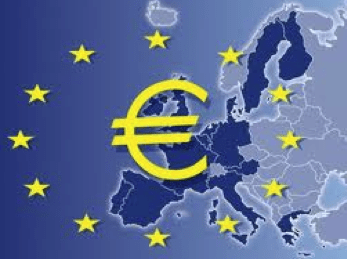 What Europe is experiencing at the moment has been seen before. Economies have collapsed or remained stagnant for decades. History is dot with changes to society that has resulted in booms and busts. It’s happened before, it’s happening now, and it will happen again.
What Europe is experiencing at the moment has been seen before. Economies have collapsed or remained stagnant for decades. History is dot with changes to society that has resulted in booms and busts. It’s happened before, it’s happening now, and it will happen again.
The difference between previous economic collapses. And what we are experiencing today is the fact that technology has provided investors. From all around the world the ability to panic sell on the whisper of a rumor. And crowd mentality has resulted in extremely volatile markets.
I recently experienced this psychological phenomenon personally. On a rainy weekend on the Gold Coast. I was standing in the food court of a shopping center. When I heard a commotion that was soon followed by a wave of people. Running, pushing, and shoving their way through the center. A shooting between bikies had occurred. And the wave of panic that followed saw children being knocked over. Chairs and tables flung wildly around, and panic and fear causing patrons to flee the center. Leaving shopping, keys, phones and everything else behind.
But as quickly as the fear had caused a wave of panic. The mood of the room turned to stunned disbelief. And within 20 minutes, was almost like nothing at all had happened. Patrons were back to their shopping, albeit with a bit of a mess around them.
My immediate impression was that this event replicated the stock exchange floor. On the whisper of a ‘big sell’, traders will offload stock/commodities in a panic rush which can last for mere minutes. When that mood extends to the broader public, the selling pressure can persist for hours, if not all day.
Last Friday’s plummeting markets in Europe and the US signify just this fact. Fears that Portugal and Spain will require the same, if not more, financial support that Greece and Italy have received have led to investors panicking over the future for global stock markets.
But this crisis has been going on for years following the initial Global Financial Crisis that had developed from Credit Default Swaps out of America. Rising government debt levels in Europe and downgrading of government debt in some European states has resulted in rising sovereign debt issues in only a few Eurozone countries, but has become a perceived problem for the region as a whole.
One of the greatest fears is that Europe will lose its common currency, the Euro, and end up having a “lost decade” of economic growth. We have already seen Japan experience such a lost decade (in fact two decades), with the country’s GDP growth between 2001 and 2010 half of what America was able to produce.
And the expectation that the stock market will always recover from a market collapse is just not a reality when we consider the Nikkei225 chart (as below). We can see that in the late 1980’s, the Nikkei fell short of 40,000 points, declining through the next decade and falling further when the 2000 DotCom crash occurred. And with the index trading around 8,350 at present, this is an 80% discount to its peak 20-years ago.
Nikkei 225 index
In 2001, Dr Robert Feldman (Managing Director of Morgan Stanley – Japan) wrote a paper on the Japanese economic crisis, defining the fact that after a major economic crisis, economies follow a very predictable set of steps. These include:
1) Crisis
2) Response
3) Improvement, and
4) Complacency
Feldman describes the CRIC cycle as such1: “When policy has been Complacent, the inevitable result is Crisis. Due to domestic political incentives. Crisis begets a Response, but the Response may not be constructive. Depending on the incentives faced by the government. If not Constructive, the Response will lead to only a short period of Improvement. Often, the Improvement reduces the sense of urgency in the economy. And a period of Complacency starts. The inevitable result is another Crisis. However, when the Response is solid. The Improvement is more lasting, and the temptation to Complacency is lower.”
There’s one more step that might be added to this process: Repeat. If none of the structural problems or underlying faults are ever fix. Any amount of response will eventually lead back to a Repeat of the cycle. Even when there are some signs of improvement. And the natural reaction to Complacency is an eventual return to the Crisis – if not in the same format, at least in a version not too dissimilar.
When we consider where the US economy is in this cycle, they have certainly entered and possibly gone through the Improvement stage. The fear is that they will enter the Complacency stage and without a change to the structural problems that caused the GFC, will revert back to a new Crisis.
Europe is currently in the Response phase. Last year we had seen some signs of improvement through the adoption of new policy. To deal with sovereign debt issues, but the Crisis has reared its ugly head again and further Response is required.
We highly anticipate that we will experience some degree of “Response” from the IMF, EU and ECB. Over the coming weeks, which will result in a positive reaction from investors. But the ensuing Improvement can only end in a Repeat of the problem. As to date there has been no changes to the underlying fundamental problems. That had caused the Crisis in the first place.
1 Source: http://www.morganstanley.com/views/gef/archive/2006/20060726-Wed.html

